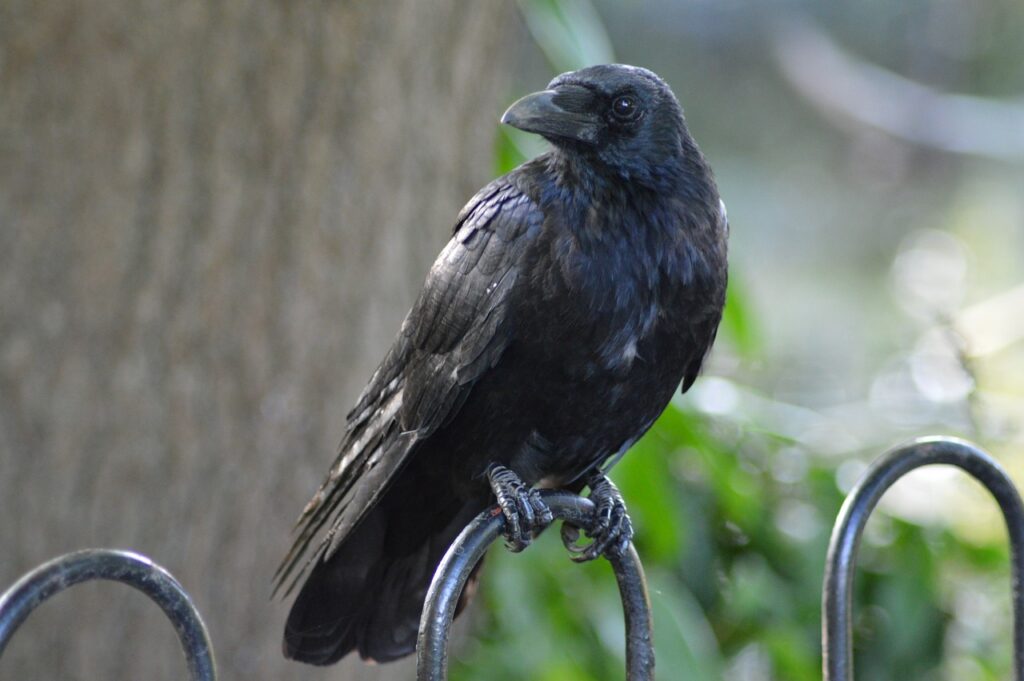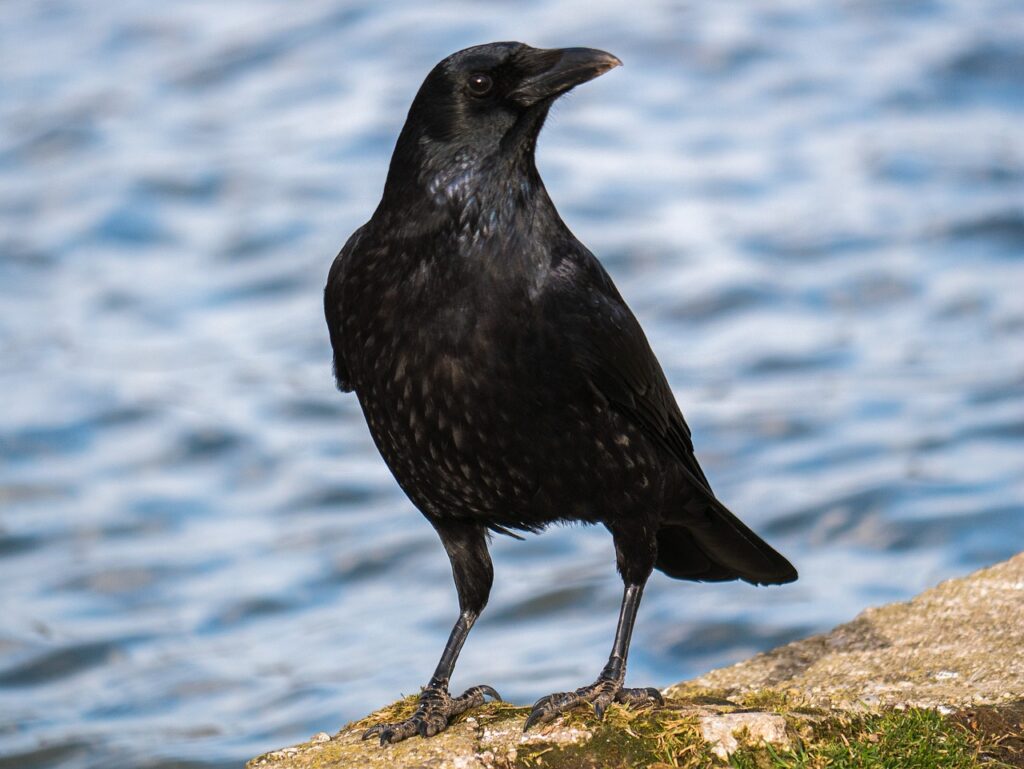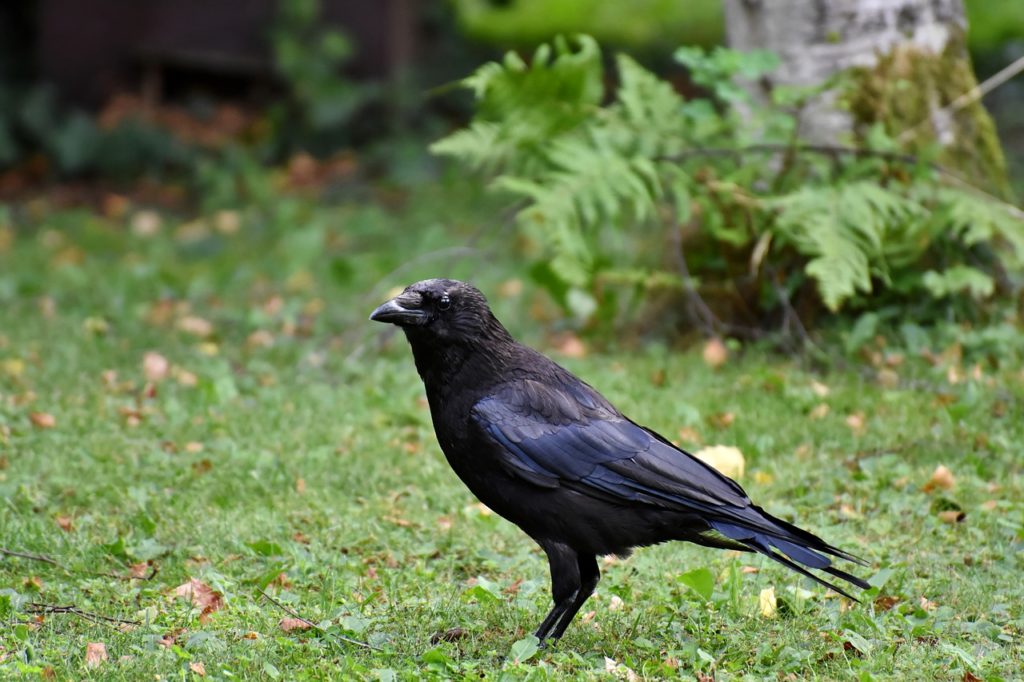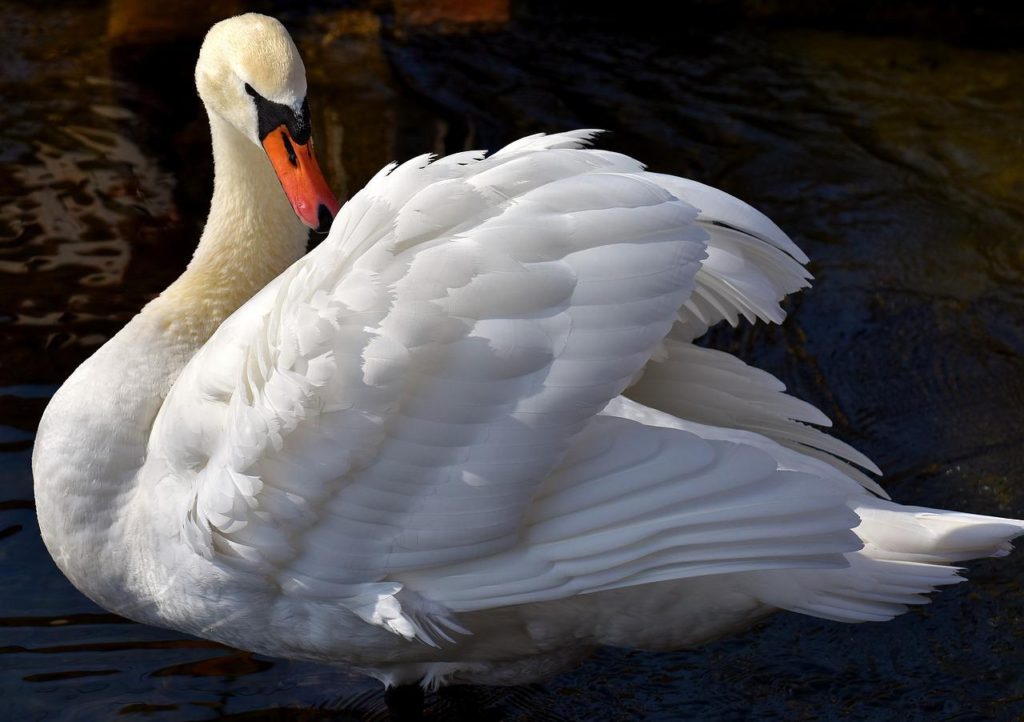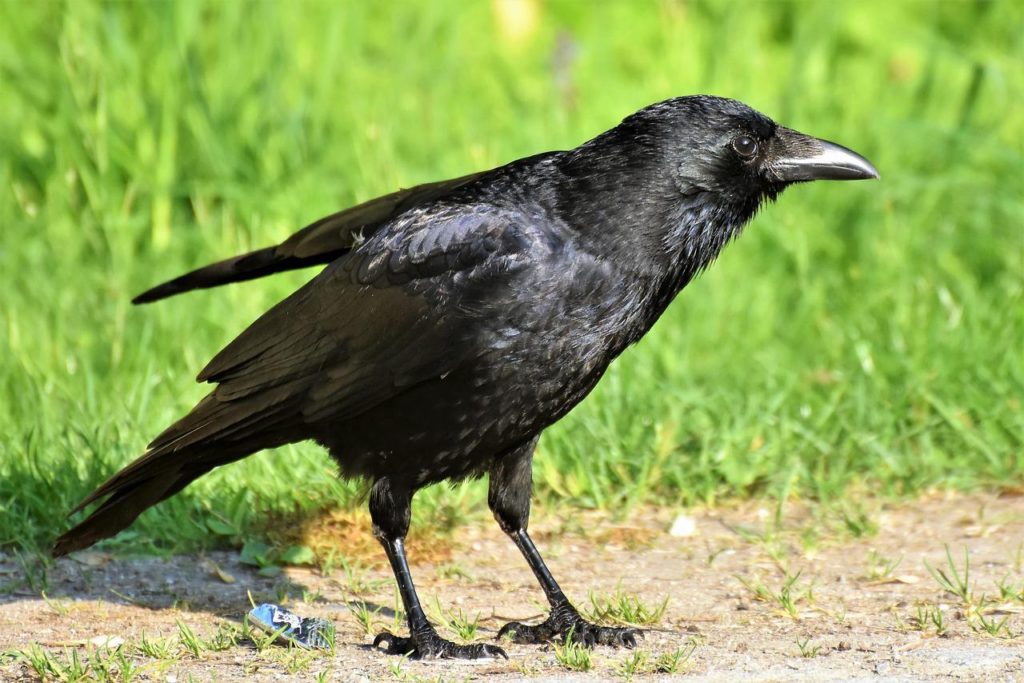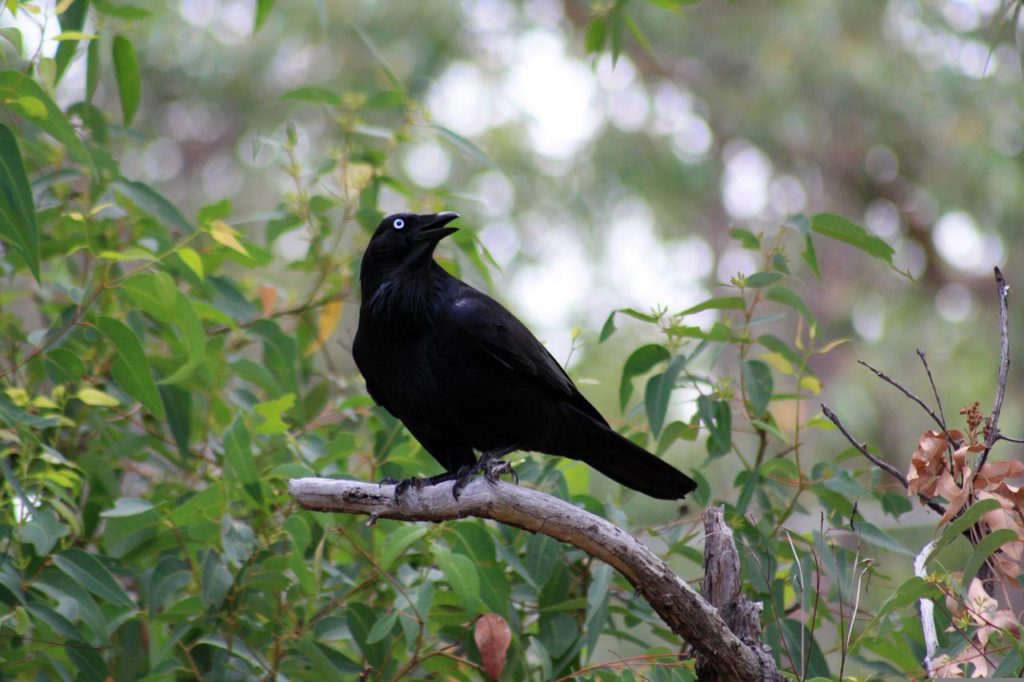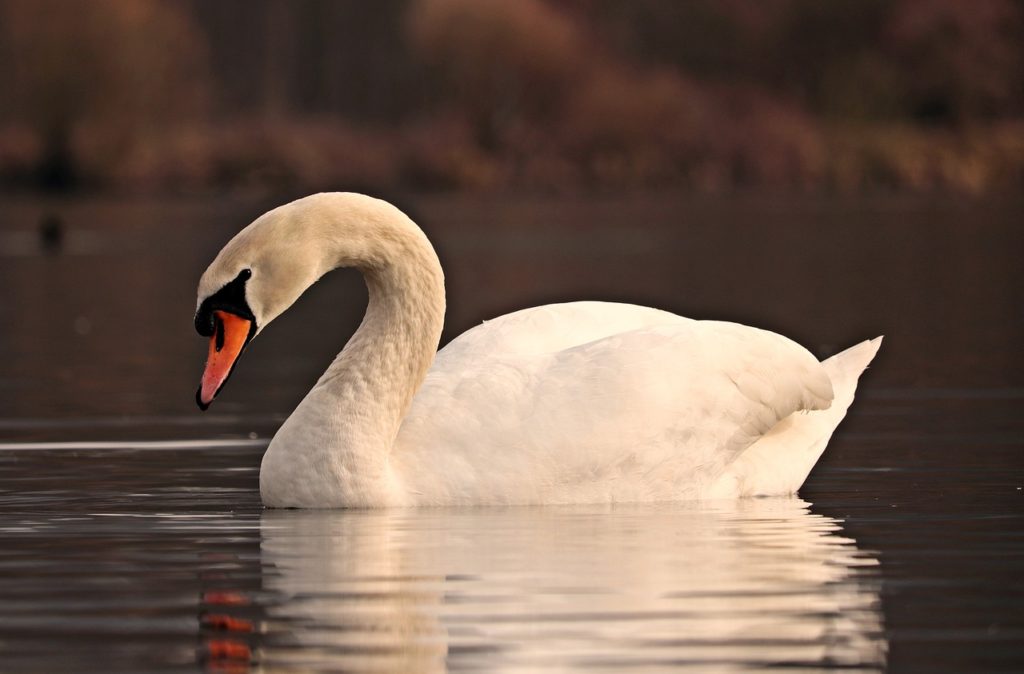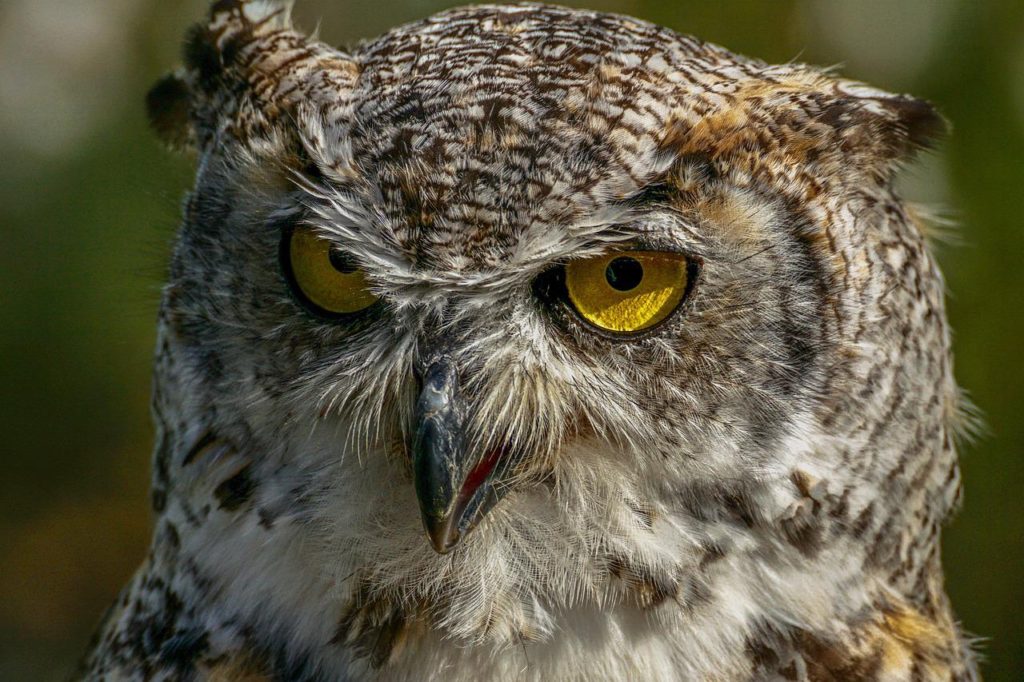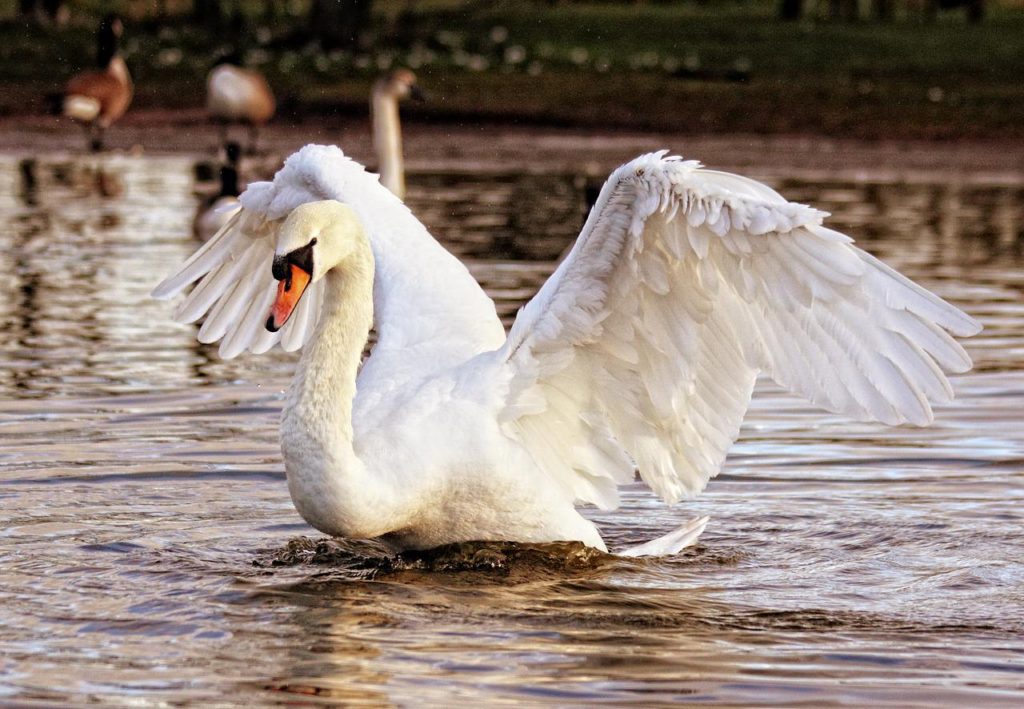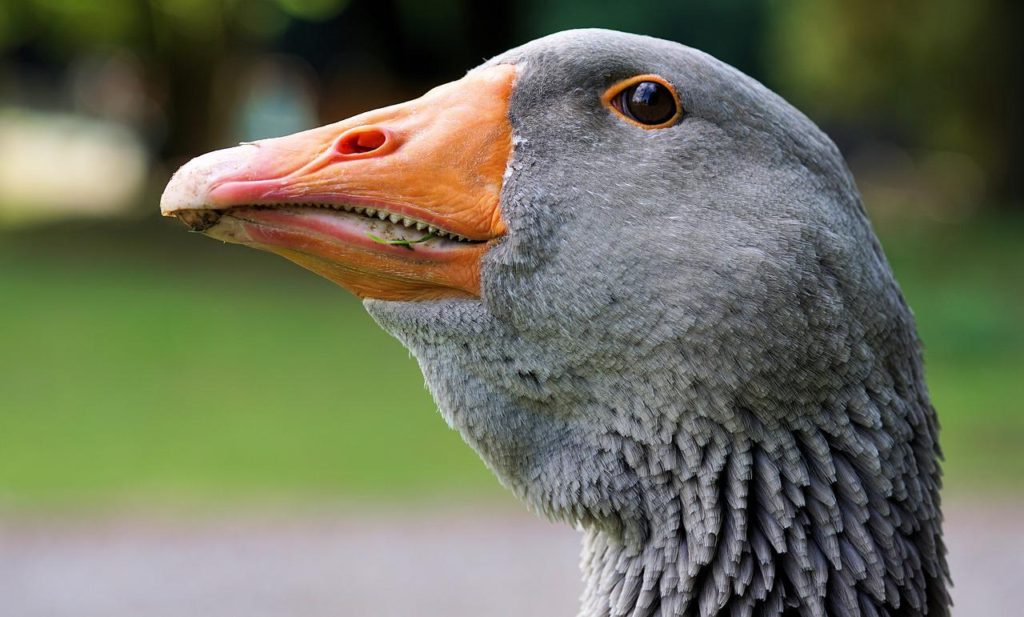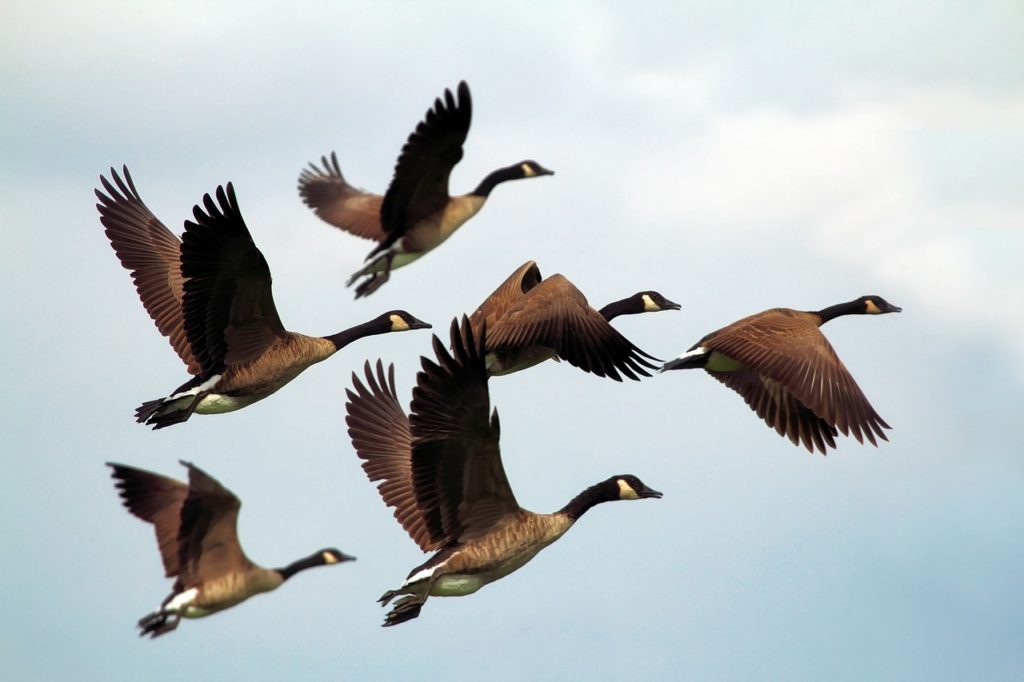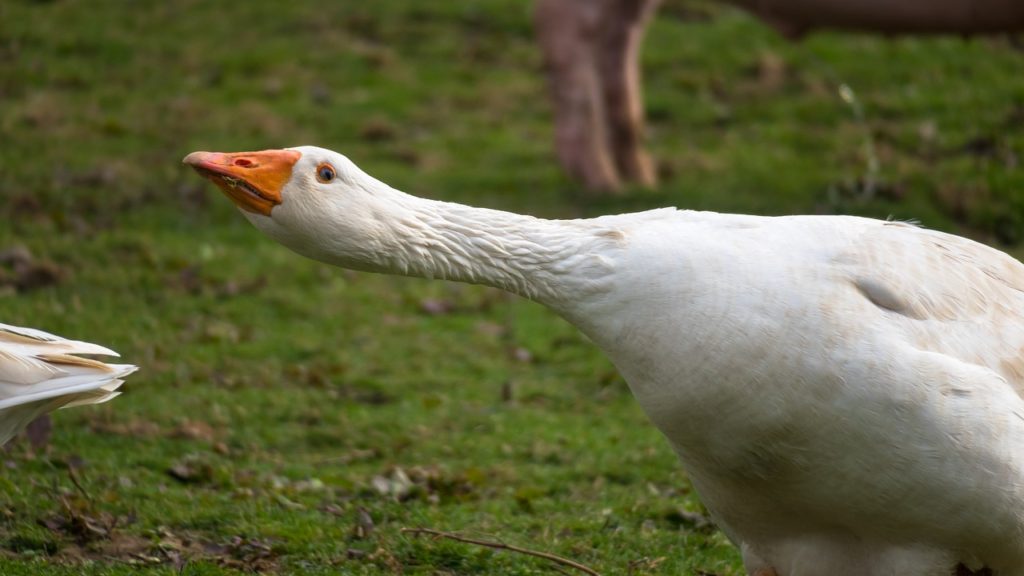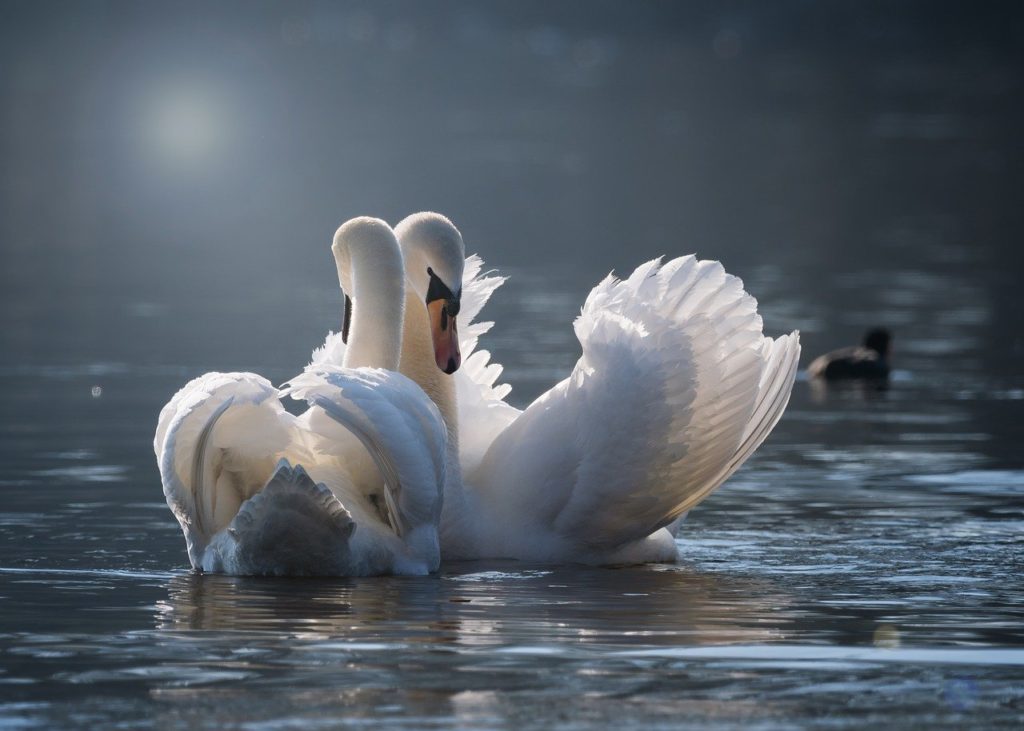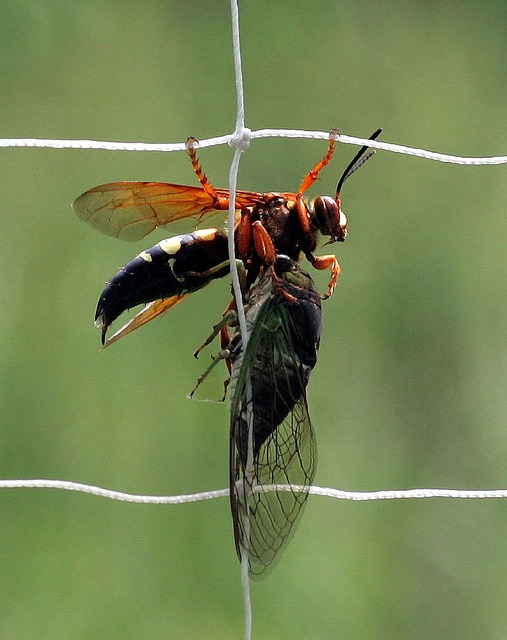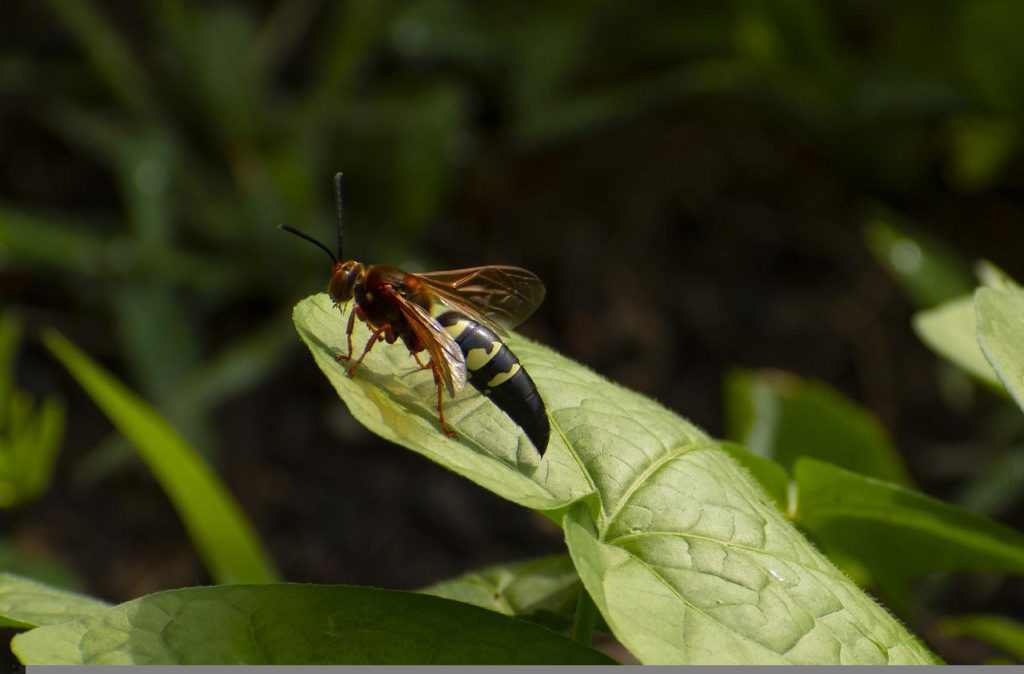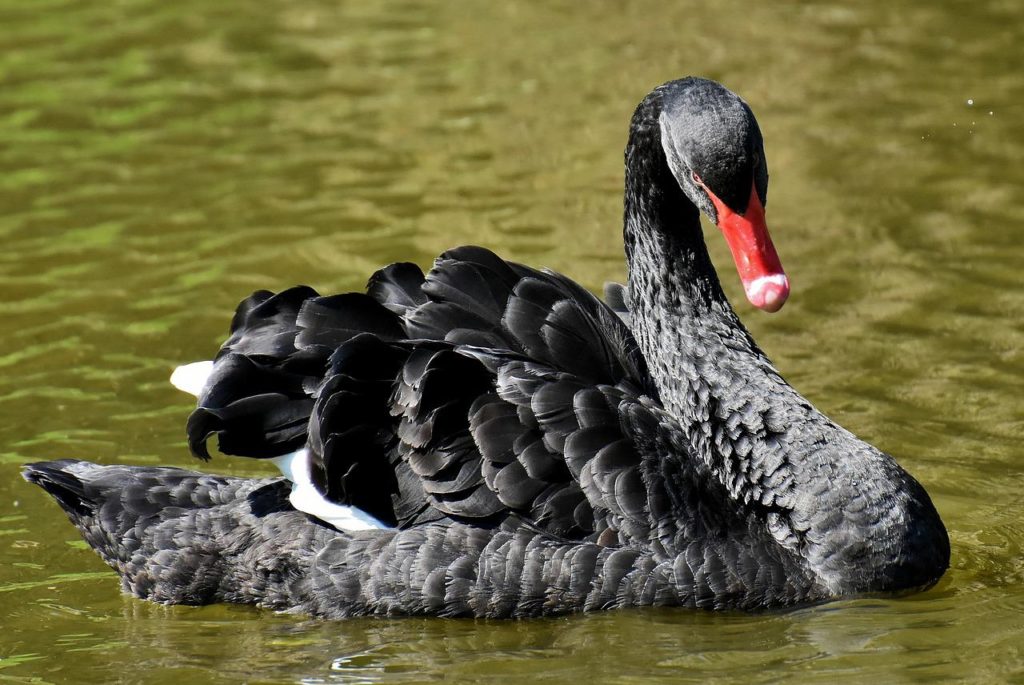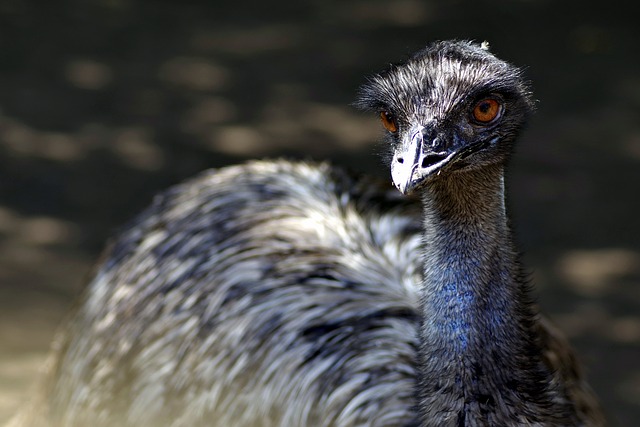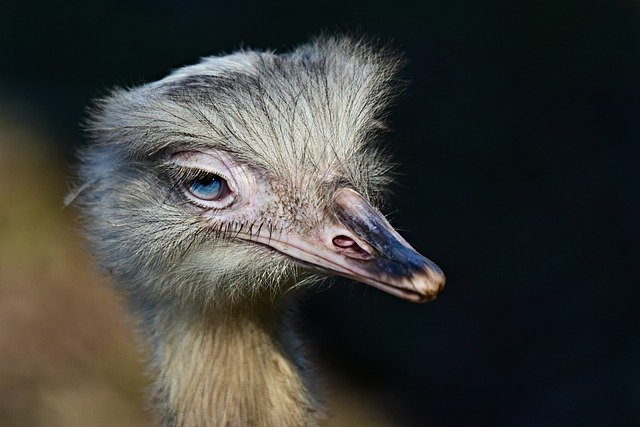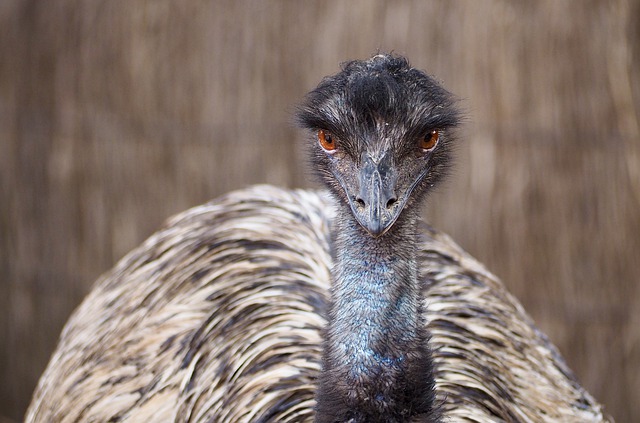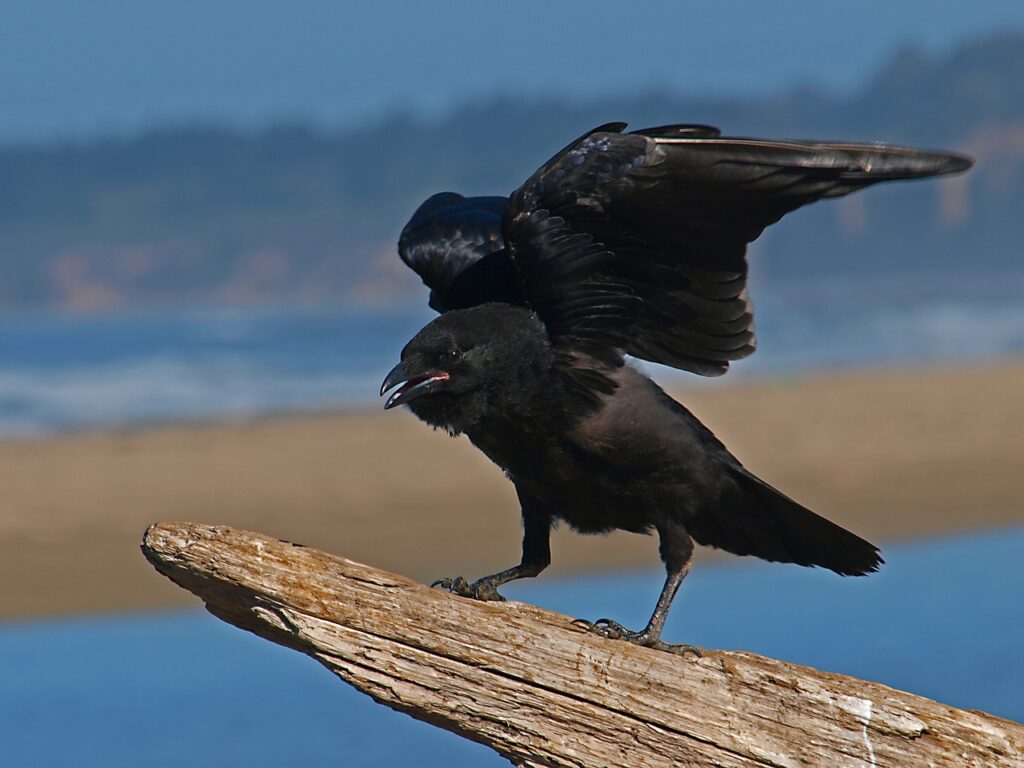
American crows are birds with all-black plumage. But why are crows black? Well, there are several reasons. Read on to find out.
Bird Color Basics
Birds are some of the most colorful creatures on the planet. And they come in an amazing range of colors from white to black and almost everything. Specific pigments in its feathers determine a bird’s color. Different pigments create the appearance of different colors. Some pigments may come from the bird’s diet.
For example, flamingos get their vibrant pink color from consuming the pigment astaxanthin. Astaxanthin is found in the algae, crustaceans, and other tiny organisms that flamingos eat. If flamingos don’t eat a diet rich in astaxanthin, they are often a pale pink or white.
Other pigments, such as melanin (one of the most essential pigments), are produced by a bird’s body itself. Melanin comes in two types: eumelanin and pheomelanin. Eumelanin is responsible for creating black and dark brown colored feathers in birds, while pheomelanin is responsible for creating brownish-red and yellow colored feathers.
American crows have a high concentration of eumelanin in their feathers. And that’s why they appear black to us. However, just how black a crow’s plumage is can also be influenced by genetics and even their environment.
Benefits Of Black Plumage
Having black feathers is beneficial for crows. Their black color helps them to survive in many ways. And that’s most likely why they evolved to have their all-black plumage. Brightly colored birds often stand out in their environment, making it easier for predators to spot them.
However, when providing camouflage, black is a perfect color. It helps crows to blend in and hide from predators in the shadows and dark forests. If you look closely, their black feathers also have an iridescent sheen. This reflects light and makes it harder for hungry predators to pick them out from their surroundings.
Having black feathers helps keep crows warm during the chilly winter months, even with little sunlight. Black absorbs a broader range of wavelengths of light than other feather colors. And none of it is reflected. So crows can absorb and retain more heat from the sun than other non-black birds.
Interestingly, black feathers can also help crows regulate their body temperature more efficiently in hot conditions. One of the ways birds cool down is through radiative cooling. And while they do absorb more heat, at the same time, black feathers radiate heat away from the body more effectively.
This allows crows to lower their body temperature by a few degrees when it gets too hot. Black feathers are also more robust and more durable than feathers of colors. That’s because the pigment (eumelanin) that makes them black also happens to reinforce the structure of the feathers, making them more durable and resistant.
Other Crow Colors
Are all crows black? American crows are almost always black birds. However, depending on the lighting, they can appear anywhere from blue to purple because they have an iridescent sheen. And while it is rare, some American crows may also have white plumage.
For example, genetic conditions such as albinism, leucism, and piebaldism can cause a crow to have patches of white or even totally white plumage. Not only are these conditions rare, but these birds don’t usually live long since predators easily spot them, and they may suffer from various health problems.
While in North America the term “crow,” almost always means the American crow, they aren’t the only crows. There are many other crow species around the world and not all of them are totally black. For example, the hooded crow has a gray head and black body.
Another crow species, the pied crow, is mostly black but has a white collar and white underparts. And its markings almost make it look like it’s wearing a white vest. And the bare-faced crow has a white or gray face with no feathers and a mostly black body and wings.
Conclusion
So why are crows black? Crows are black because they have an abundance of the pigment eumelanin in their feathers. And having all-black plumage helps them to survive in various ways, from helping them to regulate their body temperature to providing camouflage.
Start Shopping for Birding Supplies!
What Are Crows Good For?
Crows are widely considered to be pests. However, these large and highly intelligent black birds actually serve quite a few important functions in the environment. So what are crows good for? Here's what you'll want to know. Pest And Parasite Management Crows are...
How Long Do Swans Live?
Swans are graceful and beautiful creatures and as such, people have many questions about them. They want to know about their mating rituals, their diet, their preferred habitats, and even their lifespans. How long do swans live for anyway? Swan lifespans actually vary...
Are Crows Good Pets?
People all around the world see and hear crows on a daily basis. Although these intelligent and dark birds are practically ubiquitous, most people don't think of them as being household pets. Are crows good pets? The general consensus is that crows do not make...
Are There Crows In Australia?
Crows are remarkably smart birds that also happen to be extremely adaptable. They navigate unfamiliar circumstances via observation and interaction. Crows reside in locations all over the globe. While they do not live in certain parts of South America, they do reside...
What Do Swans Eat?
Swans are famously long-necked birds that are symbols of romance, love, beauty, and purity. Since these waterbirds have so many admirers, people often wonder about their eating habits, behaviors, and more. What do swans eat, anyway? Swan Basics Swans typically live in...
Birds That Look Like Owls
Owls are typically solitary and mainly nocturnal birds. And although these well-known hooting creatures have a rather distinctive physical appearance, there are actually various other kinds of birds that resemble owls closely. And people sometimes mix them up. So...
Why Are Swans Protected?
Swans are graceful and gorgeous creatures. They also happen to have protection in the United Kingdom, interestingly enough. Why are swans protected there, anyway? And does the Queen own all the swans? Yes, she actually owns any mute swans that are unclaimed in both...
Birds With Teeth
Birds do not have teeth. However, there are quite a few that really look like they do! These birds have evolved special beaks which help them to perform important functions. So here are some of the most amazing birds with “teeth,” and what you’ll want to know about...
Do Geese Fly?
Although geese are clearly birds, there are many individuals who do not necessarily associate them with flying. So, do geese fly? The honest answer is that these waterfowl do. They do not exactly slouch in the flying department, either. Many people are pleasantly...
Are Geese Dangerous?
Geese, in brief, are waterbirds that are quite substantial in size. Since they're often spotted on golf courses, at schools, and in community parks, people understandably tend to wonder whether they're safety threats. Are geese dangerous? Why Geese Attack...
Do Swans Mate For Life?
Swans are famously elegant waterbirds that are known for their sizable bodies, webbed feet, and lengthy necks. People often associate them with romantic imagery and monogamy. Do swans mate for life? You can find the response to that common and rather fascinating...
When Do Cicada Killers Come Out?
Whether you dread them each year or are waiting for them to emerge and control the cicada population you may be wondering, “When do cicada killers come out? The answer is they come out each summer in late June or July. Here’s what you’ll want to know. Cicada Killer...
Are Cicada Killers Dangerous?
One look at one of these huge wasps buzzing around, your yard, and it’s only natural to ask, “Are cicada killers dangerous?” Fortunately, these wasps are mild-mannered. But here’s what you’ll want to know. Cicada Killer Wasps Basics Cicada killers emerge from the...
What Are Black Swans?
What are black swans? Black swans (Cygnus atratus) are sizable waterbirds. This species primarily appears in Australia's southwestern and southeastern portions. The black swan is nomadic in its homeland. This bird, true to its name, is mostly black. Although the bird...
What Do Cicada Killers Eat When There Are No Cicadas?
What do cicada killers eat when there are no cicadas? Well, while cicada killer wasps do hunt cicadas, the adults don’t actually eat them or kill them, their young do. Read on to learn more! The Cicada Killer Diet While you may have seen cicada killer wasps flying...
Do Cicada Killer Wasps Sting?
As one of the biggest species of wasp in North America the cicada killer wasp can be intimidating. And because of their size, appearance, and scary-sounding name, many people wonder, “Do cicada killer wasps sting? The answer is yes and no, and here’s what you’ll want...
Emu Facts
Did you know? One emu egg can make an omelet that can feed up to six adults. Did you know that the emu is the only bird with calf muscles? Can an emu walk backward? Let us find out by exploring some of the most jaw-dropping emu facts. Emus Have Amazingly Powerful Legs...
Rhea Facts
Doting dads, did you know the male rhea builds the nest, incubates the eggs, and takes care of the young? The rheas are paragons of parental care. It’s a bird like no other, and you will be surprised by the following rhea facts. Rheas Are One Of The Best Dads In The...
Alligator Snapping Turtle Facts
Flightless Australian Birds
There are over sixty species of flightless birds in the world. These birds have lost their capability to fly through evolution, and several of them live in the “land Down Under.” So here’s a list of all the flightless Australian birds. Emu The emu is a large...
